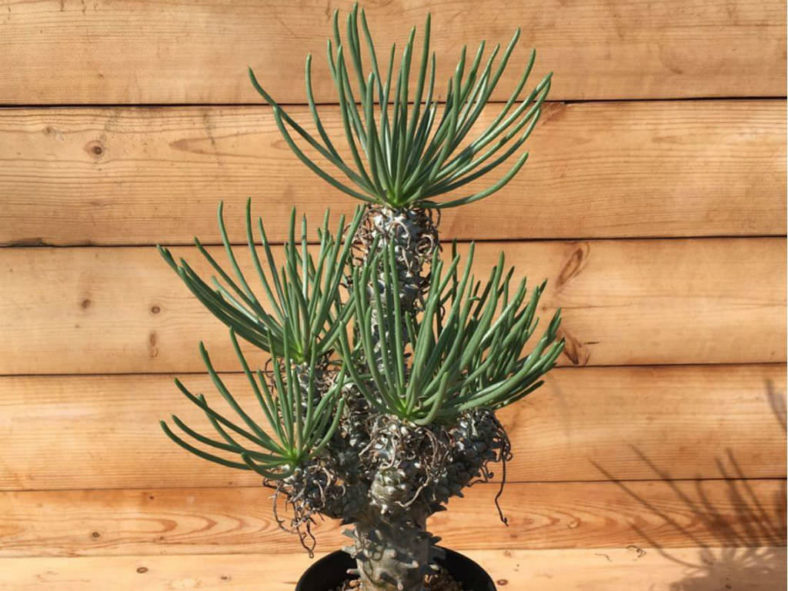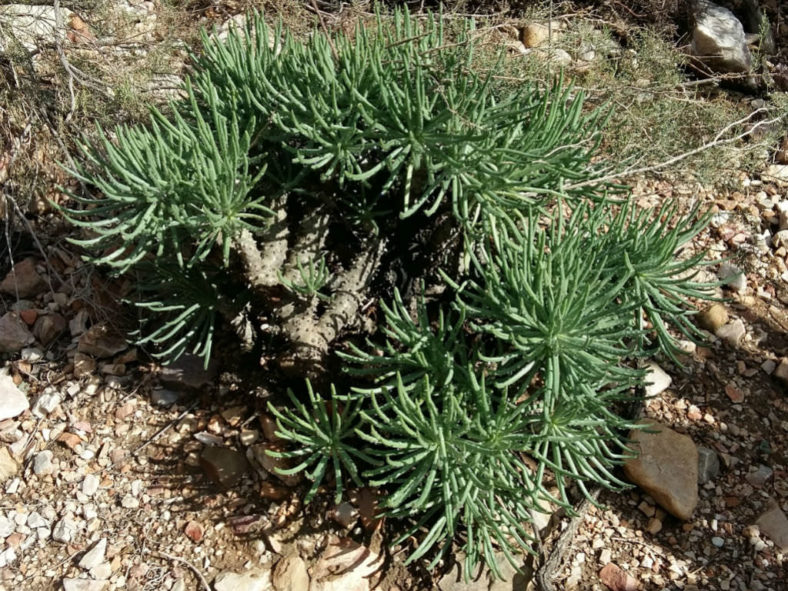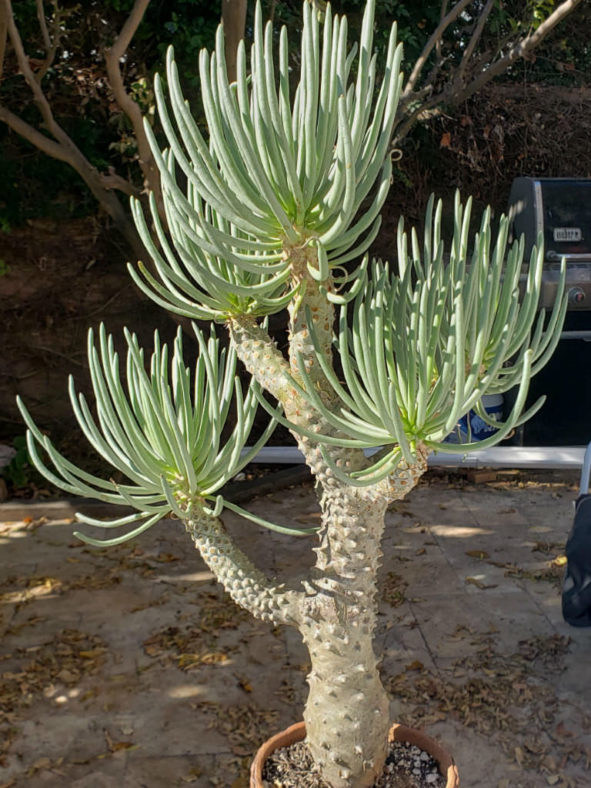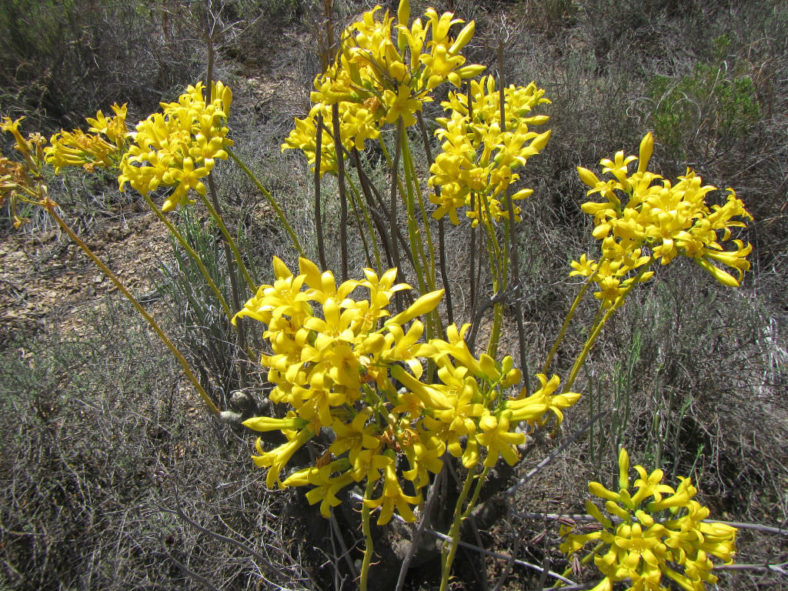Scientific Name
Tylecodon cacalioides (L.f.) Toelken
Common Name(s)
Sulphur Butterbush
Synonym(s)
Cotyledon cacalioides, Tylecodon cacaliodes
Scientific Classification
Family: Crassulaceae
Subfamily: Kalanchoideae
Genus: Tylecodon
Etymology
The specific epithet "cacalioides (ka-kal-ee-OY-deez)" means "resembling Cacalia" and to the likeness of the species to some of the members of the genus Cacalia.
Origin
Tylecodon cacalioides is native to South Africa (mainly in the eastern parts of the Little Karoo).
Description
Tylecodon cacalioides, also listed as Tylecodon cacaliodes, is a succulent shrub that has a main stem with yellow-grey peeling bark and grey-green branches with short phyllopodia. It can grow up to 3.3 feet (1 m) tall. The main stem can reach up to 2 inches (5 cm) in diameter, while the branches are up to 7 inches (1.8 cm). The leaves are thick, fleshy, grey-green or pale green, cylindrical, slightly grooved on the upper surface, measuring up to 2.8 inches (7 cm) long and 0.2 inches (0.5 cm) in diameter. They grow in tufts at the ends of the branches, curving upwards.
The inflorescences are dense clusters of flowers at the top of the stalks that grow from the tip of the branches, reaching up to 22 inches (55 cm) in length. The flowers are sulfur-yellow, inside with fine hairs, five-lobed, measuring up to 0.8 inches (2 cm) in diameter. They appear in summer when there are no leaves on the branches.

How to Grow and Care for Tylecodon cacalioides
Soil: A well-draining soil mix is the key to healthy Tylecodon. Poor drainage and overwatering most commonly cause root rot in both indoor and outdoor plants.
Light: Tylecodons can survive direct sunlight exposure without problems, but they will grow beautifully in shadow.
Hardiness: Tylecodon cacalioides can withstand temperatures as low as 35 to 50 °F (1.7 to 10 °C), USDA hardiness zones 10b to 11b.
Watering: As winter is the growing season, Tylecodons require careful watering from winter until the spring. Get the soil wet, and then wait until it is dry before watering again. In the summer, reduce watering to once per month.
Fertilizing: Use liquid fertilizer for cacti and other succulents in winter.
Repotting: You do not need to repot these plants often. You can do it when the container becomes too small or shallow.
Propagation: Tylecodons can be cultivated either by seed or by cuttings.
Learn more at How to Grow and Care for Tylecodon.
Toxicity of Tylecodon cacalioides
Tylecodon species are adapted to avoid animal predation being poisonous. Therefore, keep them away from children, pets, and livestock.
Links
- Back to genus Tylecodon
- Succupedia: Browse succulents by Scientific Name, Common Name, Genus, Family, USDA Hardiness Zone, Origin, or cacti by Genus
Photo Gallery
Click on a photo to see a larger version.


